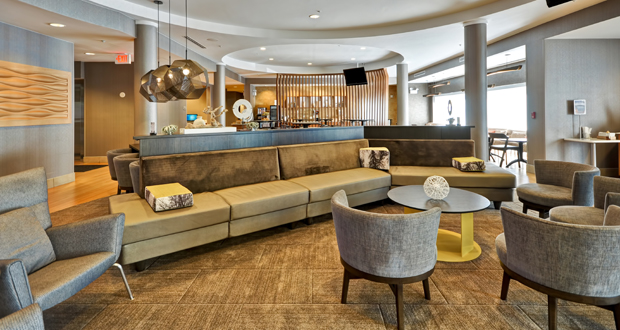
With the lowest unemployment rate in 17 years, corporate tax cuts on the horizon, and a reported 313,000 new jobs in February, U.S. businesses are poised to enjoy continued economic growth. This economic trajectory began after the 2008 financial crisis and is already one of the longest economic expansions in U.S. history. The economy is expected to grow 2.6 percent in 2018, which could stimulate business investments and, ultimately, drive growth for U.S. businesses across virtually all industries. These market forces, combined with higher-than-ever consumer expectations, are driving an increased number of renovations in the hospitality industry and a particularly strong cycle in the select-service sector.
Key Driver #1: Market Activity
A general rule that the industry has come to expect is that select-service properties undergo renovations every seven to 10 years. Because the economy is roughly a decade out from the Great Recession, and because many properties avoided making renovations until immediately following the economic downturn, the time for many hotels to refresh their spaces is now.
However, these renovations aren’t just being initiated by existing ownership; they’re also driven by acquisition activities. When ownership groups are seeking new investment opportunities, the select-service sector is often a profitable option. Not only do these properties offer steady growth and a reliable return on investment, but they also offer a quicker path to market due to streamlined design and construction timelines.
Right now, acquiring financing is more conceivable than in many other points in recent history, due in part to the strength of the national economy. As ownership groups add to their portfolios using these financing dollars, Property Improvement Plans (PIPs) are issued and renovations ensue.
Key Driver #2: Consumer Expectations
First impressions matter. Many guests form their opinions of a hotel within the first 60 seconds of arriving. Though this has long been the case, rising consumer expectations have made it even more challenging for hotels to leave lasting impressions on guests. This is especially true in the select-service sector, where design is more streamlined and budgets are tightly managed. The public has more access to and understanding of hospitality design than ever before, and this new level of design literacy comes along with guests even as they check into a select-service hotel.
Additionally, travelers have come to expect higher standards of service and accessibility, regardless of whether they’re staying at luxury resorts or budget-friendly properties. To help meet those expectations, the select-service segment continues to seek new ways to craft increasingly personalized, wholly unique environments for guests of all types.
Trends Converge: Making a Renovation Count
When select-service property owners take both market activities and consumer expectations into consideration, they often find themselves in one of two positions. They are currently either at the point that their hotel requires a refresh, or they might be in the process of acquiring a property for their portfolio, in which case they will be taking action based on the PIP provided.
Between new builds, elevated purchasing activity, and increased renovations overall, competition in the select-service sector is tighter than ever before. Consumers also have an array of options to choose from, so properties are striving to differentiate themselves from competitors more than ever before.
That said, it’s important to be strategic. Partnering with a team that can effectively leverage PIPs for smooth approval processes saves hoteliers time and money throughout the process. Design teams that harbor a deep understanding of brand standards for all select-service flags can find innovative ways to achieve brand compliance while maintaining a level of creativity that truly sets properties apart.

About the Author
Erin Heckert is a director at Gettys ONE. Overseeing all of Gettys ONE’s varied projects, Heckert brings a wealth of experience in everything from historic renovations to mixed-use developments. She loves reading personal travel stories to hone her insights on guests’ experiences near and far.
Photo: The lobby at SpringHill Suites by Marriott Tallahassee-Central, Florida










